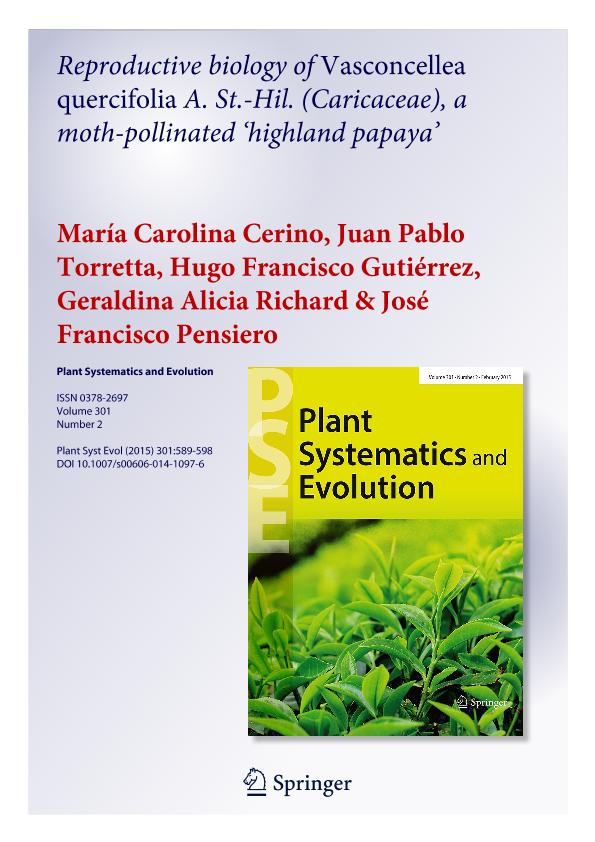Artículo
Reproductive biology of Vasconcellea quercifolia A. St.-Hil. (Caricaceae), a moth-pollinated ‘highland papaya’
Cerino, María Carolina ; Torretta, Juan Pablo
; Torretta, Juan Pablo ; Gutierrez, Hugo Francisco; Richard, Geraldina Alicia
; Gutierrez, Hugo Francisco; Richard, Geraldina Alicia ; Pensiero, Jose Francisco
; Pensiero, Jose Francisco
 ; Torretta, Juan Pablo
; Torretta, Juan Pablo ; Gutierrez, Hugo Francisco; Richard, Geraldina Alicia
; Gutierrez, Hugo Francisco; Richard, Geraldina Alicia ; Pensiero, Jose Francisco
; Pensiero, Jose Francisco
Fecha de publicación:
02/2015
Editorial:
Springer Wien
Revista:
Plant Systematics And Evolution
ISSN:
0378-2697
e-ISSN:
2199-6881
Idioma:
Inglés
Tipo de recurso:
Artículo publicado
Clasificación temática:
Resumen
Vasconcellea species, often referred to as highland papayas, are wild relatives of common papaya (Carica papaya) widely distributed in tropical America, with a preference for cooler climates. The genus deserves special attention as its species show potential as raw materials in the tropical fruit industry, papain source or as genetic resources in breeding programs of C. papaya. However, studies related to breeding system and pollination biology of genus are still unexplored. We characterize the reproductive biology of dioecious Vasconcellea quercifolia, one of the southernmost Caricaceae. According to floral shape and presence of nectar, we expected that this species had a specializated pollination system, with moths as the primary pollinators. To test this, we studied floral biology, floral visitors, pollinators, and breeding system of this species. Controlled pollination experiments show that V. quercifolia is a xenogamous species that depends on its pollinators to set fruits (18 and 79 % fruit and seed set under open-pollination, respectively). Anemophily and apomixis occur very seldom. The treatments of exclusion of floral visitors and pollen load analysis showed that the main pollinators are moths belonging to Arctiidae, Noctuidae, and Pyralidae. The only reward for pollinators is the nectar produced by male flowers. Female flowers are pollinated by deceit because they do not produce floral rewards.
Palabras clave:
Vasconcellea
,
Reproductive
,
Pollinated
,
Papaya
Archivos asociados
Licencia
Identificadores
Colecciones
Articulos(OCA PQUE. CENTENARIO)
Articulos de OFICINA DE COORDINACION ADMINISTRATIVA PQUE. CENTENARIO
Articulos de OFICINA DE COORDINACION ADMINISTRATIVA PQUE. CENTENARIO
Citación
Cerino, María Carolina; Torretta, Juan Pablo; Gutierrez, Hugo Francisco; Richard, Geraldina Alicia; Pensiero, Jose Francisco; Reproductive biology of Vasconcellea quercifolia A. St.-Hil. (Caricaceae), a moth-pollinated ‘highland papaya’; Springer Wien; Plant Systematics And Evolution; 301; 2; 2-2015; 589-598
Compartir
Altmétricas



